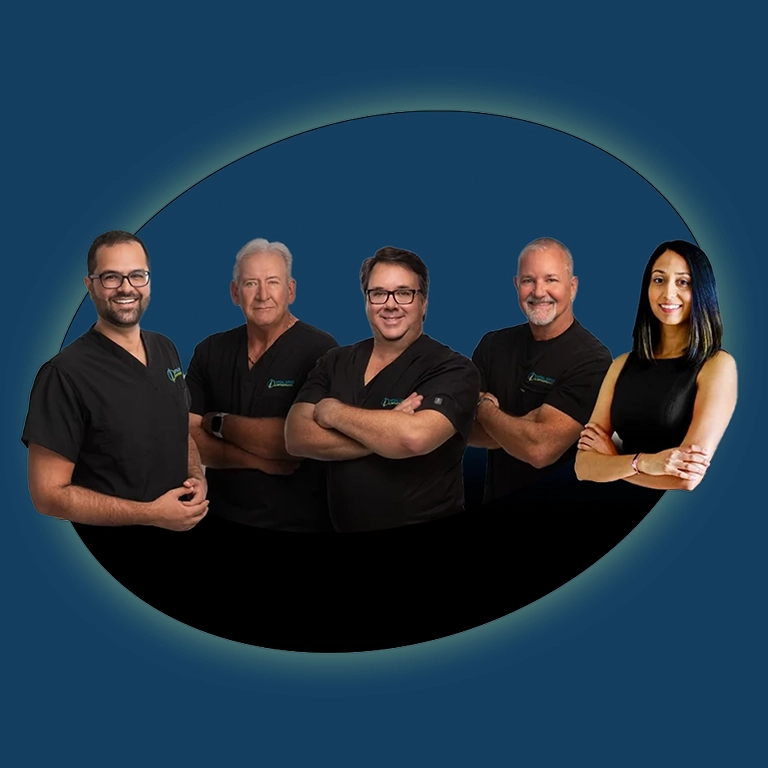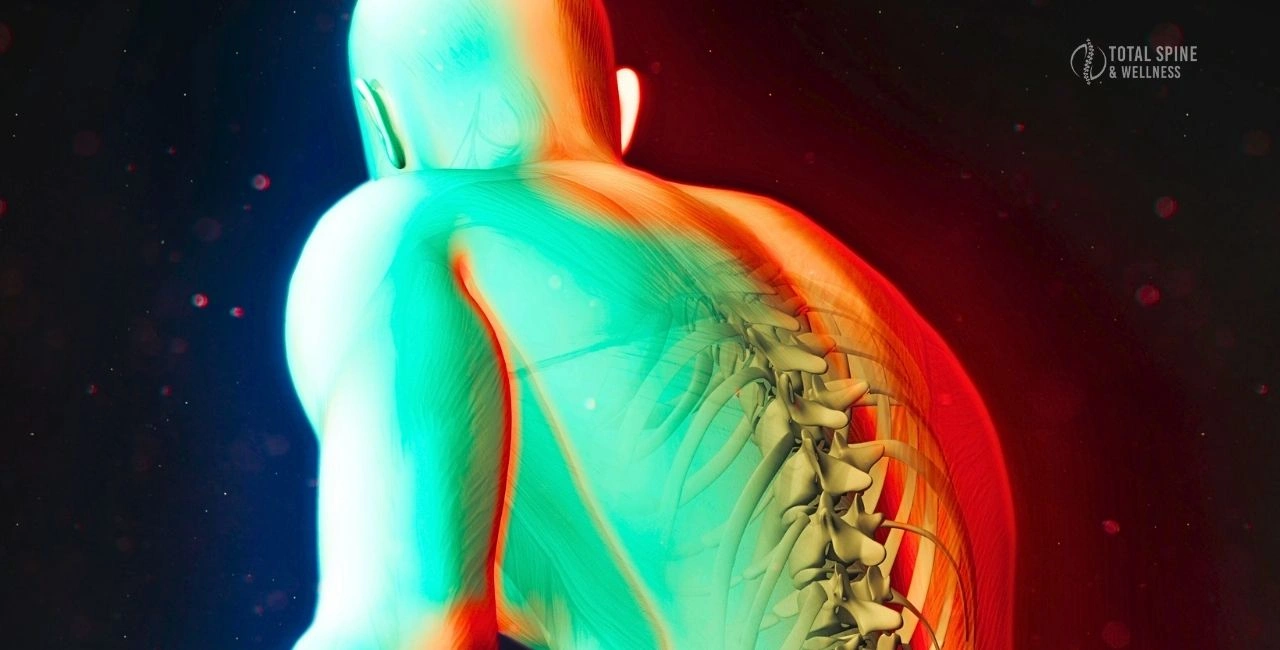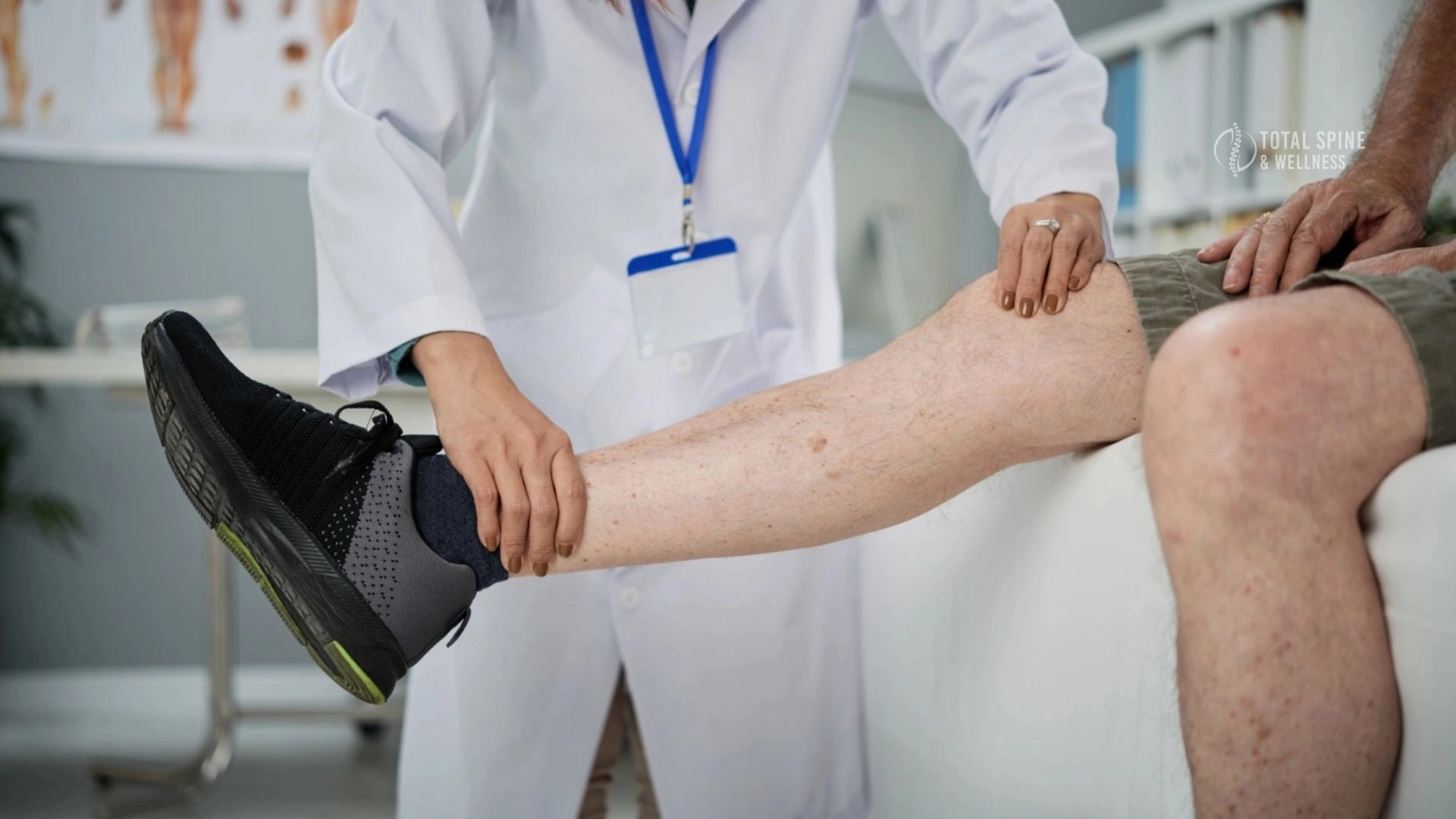Best Stem Cell Therapy for Knee Pain: Evidence, Options & How to Choose
Why Choose Total Spine Wellness for Disc Regeneration?
At Total Spine Wellness, we lead with experience, compassion, and innovation. Our customized regenerative protocols, state-of-the-art imaging, and multi-specialty team ensure your spine gets the attention it deserves.
We also offer a wide range of related treatments, including:
- Endoscopic Spine Surgery
- Stem Cell Therapy
- PRP Therapy
- Disc Regeneration
If you’ve been silently battling disc pain and wondering if there’s any hope for healing, you’re not alone. It’s natural to ask can spinal discs regenerate—and thankfully, the answer today is more promising than ever. At Total Spine Wellness, we use advanced techniques designed to help regenerate disc tissue, reduce pain, and restore function. Whether you’re newly diagnosed or have been living with this for years, it’s never too late to explore your options. can a degenerated disc regenerate fully? With the right care plan and expert guidance, significant healing is absolutely possible.
Book your consultation today and take the first step toward long-term relief and a healthier spine.
Stem Cell Therapy
Introduction
Knee pain affects millions of adults every year — whether from arthritis, sports injuries, or age-related wear and tear. As traditional treatments like corticosteroid injections or surgery come with risks and downtime, more patients are searching for non-surgical alternatives that promote natural healing.
Among these innovative options, stem cell therapy has gained global attention for its potential to regenerate cartilage, reduce inflammation, and restore mobility. But with so many options out there, you might wonder:
What’s the best stem cell therapy for knee pain — and does it really work?
Let’s explore what current research and clinical experience reveal.
1. What Does “Best” Mean When It Comes to Stem Cell Therapy?
When people ask about the best stem cell therapy for knee pain, they’re usually seeking results that are safe, effective, and long-lasting. However, the “best” treatment depends on individual factors — such as the type and severity of knee damage, age, and overall health.
According to multiple meta-analyses and clinical studies, stem cell therapy can provide significant pain reduction and mobility improvement for 6–12 months in many patients. Some even maintain benefits for several years with lifestyle support and physiotherapy.
Still, it’s crucial to understand that stem cell therapy is not a one-size-fits-all solution. The best outcomes come from evidence-based, properly regulated procedures performed by trained specialists.
External Reference: FDA Consumer Alert on Regenerative Medicine Products, Including Stem Cells and Exosomes
2. How Stem Cell Therapy Works for Knee Pain
So, how does the best stem cell therapy for knee pain actually work?
Stem cells are unique because they can transform into different types of tissues — including cartilage, muscle, and bone. When injected into an injured knee joint, they can:
- Reduce inflammation
- Stimulate new tissue growth
- Improve lubrication in the joint
- Slow down degenerative damage
This regenerative process helps the knee heal from the inside out, unlike temporary relief methods like corticosteroid injections.
👉 Learn more about the science behind the procedure in our How Stem Cell Treatment Works guide.
3. Comparing the Main Stem Cell Options
There isn’t just one type of stem cell knee therapy — and knowing the differences helps patients choose the right one for their condition.
BMAC (Bone Marrow Aspirate Concentrate)
BMAC uses stem cells extracted from your own bone marrow, typically from the pelvis. These mesenchymal stem cells (MSCs) are processed and reinjected into the knee joint to promote healing.
Pros:
- Autologous (your own cells → low rejection risk)
- Clinically supported for arthritis and tendon repair
- FDA-compliant when used minimally manipulated
Cons:
- Mild discomfort from bone marrow extraction
- Effectiveness may decrease with age
📘 Learn more in our BMAC Therapy Guide.
SVF (Stromal Vascular Fraction from Fat Tissue)
SVF therapy uses stem cells derived from adipose (fat) tissue. These cells are abundant and easy to harvest, making the procedure less invasive than bone marrow extraction.
Pros:
- High stem cell yield
- Minimally invasive
- Useful for mild-to-moderate osteoarthritis
Cons:
- Some forms of SVF preparation are not FDA-approved for orthopedic use
- Variable purity between clinics
🔬 Read more on SVF Therapy for Joint & Spine Pain.
Allogeneic MSCs (Donor-Derived Stem Cells)
Allogeneic therapies use stem cells from donor sources — often processed and stored in specialized labs. These are typically used in off-shore clinics where regulations differ.
While early research shows potential, the FDA currently restricts their use in the U.S. for most orthopedic conditions.
External Source: FDA Consumer Guidance on Stem-Cell Therapies
4. What the Research Actually Shows
Scientific evidence on the best stem cell therapy for knee pain is growing rapidly.
Clinical trials show stem cell injections can reduce pain by up to 80% and improve joint function by 60–75% in mild to moderate osteoarthritis cases.
A 2023 review published in Regenerative Medicine Journal found that patients experienced noticeable improvement within 3–6 months, with sustained relief up to 24 months when combined with physiotherapy.
However, results vary — especially for patients with severe “bone-on-bone” arthritis, where stem cells cannot fully restore lost cartilage.
5. Who Is an Ideal Candidate
The best candidates for stem cell knee therapy include patients with:
- Mild to moderate osteoarthritis
- Cartilage thinning or early-stage damage
- Chronic knee pain unresponsive to physical therapy
- Sports-related injuries (ligament or tendon microtears)
Stem cell therapy is not ideal for advanced bone degeneration or autoimmune conditions that affect healing.
6. Procedure & Recovery Overview
The process for the best stem cell therapy for knee pain is simple and minimally invasive:
- Consultation & Imaging – to assess knee condition
- Harvesting – stem cells extracted from bone marrow or fat tissue
- Processing – cells concentrated and purified in a sterile lab
- Injection – guided by ultrasound for precision
- Recovery – patients rest, hydrate, and gradually return to activity
Most patients begin to notice improvements within 4–8 weeks, with continued healing for up to a year.
📍 Explore our full Stem Cell Therapy for Knees: Procedure & Recovery Guide.
7. Safety & FDA Compliance
Choosing the best stem cell therapy for knee pain also means ensuring it follows FDA and AAOS (American Academy of Orthopaedic Surgeons) standards.
At Total Spine Wellness, we use autologous, minimally manipulated stem cells, which align with current regulatory guidelines.
Avoid any clinic that claims “miracle cures” or uses unapproved imported products — these can pose serious risks.
8. Alternatives Compared: PRP, Corticosteroids, and Physical Therapy
While stem cell therapy leads regenerative medicine, some alternatives still play supportive roles.
Treatment | Mechanism | Duration | Cost | Evidence |
PRP (Platelet-Rich Plasma) | Stimulates healing with growth factors | 3–6 months | $$ | Moderate |
Corticosteroids | Reduces inflammation temporarily | 2–3 months | $ | Short-term |
Physical Therapy | Strengthens muscles | Ongoing | $$ | Strong support |
Stem Cell Therapy | Regenerates tissue & reduces inflammation | 12+ months | $$$ | Strong, emerging evidence |
Studies suggest combining PRP + stem cells may enhance long-term results.
9. Choosing the Right Option for You
Ultimately, the best stem cell therapy for knee pain depends on your condition, goals, and health status.
A personalized evaluation ensures the right treatment plan for each patient.
Our regenerative specialists at Total Spine Wellness carefully assess your case, using advanced diagnostics to design a treatment that fits your needs and expectations.
💬 Explore Regenerative Medicine Treatments in Florida to see if you’re a candidate.
10. FAQs
Is stem cell therapy really the best for knee arthritis?
Stem cell therapy can significantly relieve pain and improve function in many arthritis cases — particularly early to moderate stages — but it’s not a guaranteed cure.
How long do results last?
Results from the best stem cell therapy for knee pain typically last between 12–24 months, depending on condition severity and post-care.
Is it FDA-approved?
Autologous (your own) stem cell therapies are permitted under current FDA guidelines, but off-shore or donor-based treatments may not be.
11. Next Steps
Stem cell therapy represents one of the most advanced regenerative solutions for joint pain — offering real hope for patients who want to avoid surgery.
If you’re considering treatment, schedule a consultation with our specialists today. We’ll help determine whether you’re a good candidate and design a personalized plan for lasting relief.
Table Of Contents
- Introduction
- 1. What Does “Best” Mean When It Comes to Stem Cell Therapy?
- 2. How Stem Cell Therapy Works for Knee Pain
- 3. Comparing the Main Stem Cell Options
- 4. What the Research Actually Shows
- 5. Who Is an Ideal Candidate
- 6. Procedure & Recovery Overview
- 7. Safety & FDA Compliance
- 8. Alternatives Compared: PRP, Corticosteroids, and Physical Therapy
- 9. Choosing the Right Option for You
- FAQs About Stem Cell Therapy for Shoulders
- Final Thoughts




